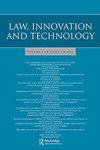确定人工智能法规的范围
Q1 Social Sciences
引用次数: 19
摘要
摘要本文认为,人工智能法规的实质范围不应依赖于术语“人工智能(AI)”。该论点是通过提出一些法律定义的要求,调查现有的人工智能定义,然后讨论它们在多大程度上满足所提议的要求来发展的。研究表明,现有的人工智能定义不符合法律定义的最重要要求。其次,本文认为基于风险的方法更可取。政策制定者应该把重点放在他们想要减少的具体风险上,而不是使用“人工智能”这个词。研究表明,通过定义相关风险的主要来源可以更好地满足法律定义的要求:某些技术方法(例如强化学习)、应用程序(例如面部识别)和能力(例如与环境进行物理交互的能力)。最后,本文讨论了这种方法在多大程度上也可以应用于更先进的人工智能系统。本文章由计算机程序翻译,如有差异,请以英文原文为准。
Defining the scope of AI regulations
ABSTRACT
The paper argues that the material scope of AI regulations should not rely on the term ‘artificial intelligence (AI)’. The argument is developed by proposing a number of requirements for legal definitions, surveying existing AI definitions, and then discussing the extent to which they meet the proposed requirements. It is shown that existing definitions of AI do not meet the most important requirements for legal definitions. Next, the paper argues that a risk-based approach would be preferable. Rather than using the term AI, policy makers should focus on the specific risks they want to reduce. It is shown that the requirements for legal definitions can be better met by defining the main sources of relevant risks: certain technical approaches (e.g. reinforcement learning), applications (e.g. facial recognition), and capabilities (e.g. the ability to physically interact with the environment). Finally, the paper discusses the extent to which this approach can also be applied to more advanced AI systems.
求助全文
通过发布文献求助,成功后即可免费获取论文全文。
去求助
来源期刊

Law, Innovation and Technology
Social Sciences-Law
CiteScore
4.50
自引率
0.00%
发文量
18
期刊介绍:
Stem cell research, cloning, GMOs ... How do regulations affect such emerging technologies? What impact do new technologies have on law? And can we rely on technology itself as a regulatory tool? The meeting of law and technology is rapidly becoming an increasingly significant (and controversial) topic. Law, Innovation and Technology is, however, the only journal to engage fully with it, setting an innovative and distinctive agenda for lawyers, ethicists and policy makers. Spanning ICTs, biotechnologies, nanotechnologies, neurotechnologies, robotics and AI, it offers a unique forum for the highest level of reflection on this essential area.
 求助内容:
求助内容: 应助结果提醒方式:
应助结果提醒方式:


